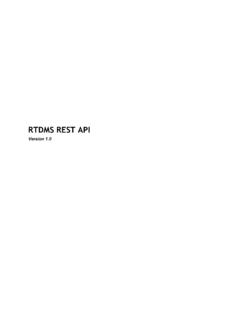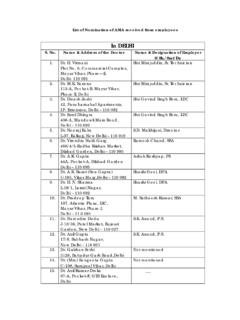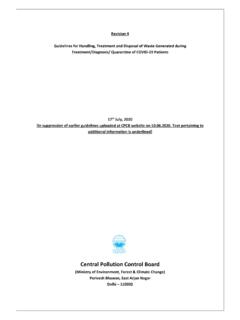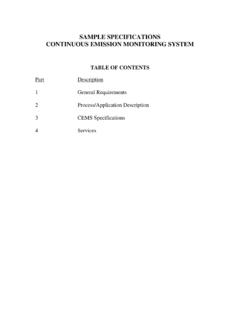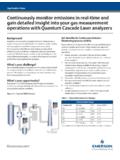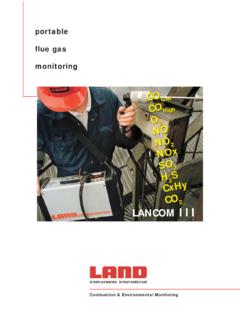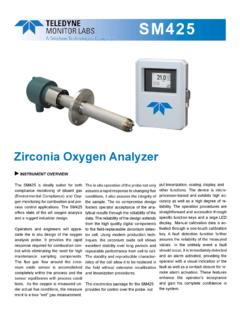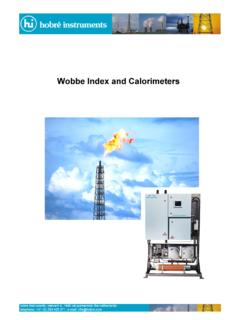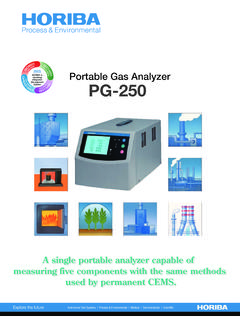Transcription of Guidelines for Continuous Emission Monitoring Systems
1 Guidelines for Continuous Emission Monitoring Systems I Guidelines for Continuous Emission Monitoring Systems CENTRAL POLLUTION CONTROL BOARD Parivesh Bhawan, East Arjun Nagar, Delhi-110032 July, 2017 Guidelines for Continuous Emission Monitoring Systems II Note: Efforts have been made to include all available Monitoring technologies/instrumentation in the document. In case any high end technology/ instrumentation is not covered or is introduced subsequently the details be forwarded to CPCB, so that the same can be incorporated while reviewing this document subsequently.
2 Compiled by : 1. Shri Kamyotra, Director 2. Shri. A. Pathak, Scientist C 3. Shri Vishal Gandhi, Scientist C 4. Shri Manish Kumar Gupta, RA Guidelines for Continuous Emission Monitoring Systems III CONTENTS Background : 1 Genesis of Problem : 2 Continuous Emission Monitoring System (CEMS) : 3 Objectives of Continuous Emission Monitoring Systems : 3 Merits of CEMS : 6 Technical Options for Sampling of Pollutants in CEMS : 7 Sampling Location for Particulate Matter : 10 Analysis of Measurement Techniques : 12 Measurement Techniques for Particulate Matter and Gaseous Pollutant : 21 Techniques/ Instrumentation for online PM Monitoring .
3 21 Techniques/ Instrumentation for Online Gaseous Pollutant Monitoring : 31 Flue Gas Flow / Velocity Monitoring Techniques : 49 Ultrasonic Flow Monitors : 49 Differential Pressure Flow Monitors : 50 Thermal Flow Monitors : 51 Infrared Correlation : 51 Assessment of Monitoring Technologies : 52 Site Requirement and Preparation for Mounting of Continuous Emission Monitoring System : 80 Guidelines for Continuous Emission Monitoring Systems IV Calibration, Performance Evaluation and Audit of CEMS : 81 Recommended Instrumentation/Methodology for Monitoring : 83 Acceptance of CEMS Until Indigenous Certification System is Placed : 84 Calibration of Air Analysers (Gaseous Parameter) : 86 Calibration of Air Analysers (Particulate Matter) : 87 Emission Monitoring : 88 Data Consideration/ Exceedance for Violation : 89 Data Acquisition System (Das) : 90 Data Ac quis ition, Management and Reporting : 91 Summ ary : 93 References : 96 Guidelines for Continuous Emission Monitoring Systems 1 BACKGROUND Central Pollution Control Board vide its letter No.
4 B-29016/04/06 PCI-1/5401 dated issued directions under section 18(1) b of the Water and Air Acts to the State Pollution Control Boards and Pollution Control Committees for directing the 17 categories of highly polluti ng industries such as Pulp & Paper, Distillery, Sugar, Tanneries, Power Plants, Iron & Steel, Cement, Oil Refi neries, Fertilizer, Chloral Alkali Plants, D ye & Dye Intermediate Units, Pesticides, Zinc, Copper, Alumi num, Petrochemicals and Pharma Sector, etc., and Common Effluent Treatment Plants (CETP), Sewage Treatment Plants (STPs), Common Bio Medical Waste and Common Hazardous Waste Incinerators for i nstallation of online effluent quality and Emission Monitoring Systems to help tracking the discharges of pollutants from these units.
5 The directions envisage: a) Installation of onli ne Emission quality Monitoring system i n 17 categories of highly polluti ng industries and i n Common Hazardous waste and Biomedical waste inci nerators for measurement of the parameters, Particulate Matter, NH3 (Ammonia), SO2 (Sulphur Dioxide), NOX (Oxides of Nitrogen) and other sector specific parameters, not later than by March 31, 2015 and transmission of online data so generated simultaneously to SPCB/PCC and CPCB as well. The deadli ne was later extended to June 31, 2015. b) Installation of surveillance system with industrial grade IP (Internet Protocol) cameras having PAN, Tilt, Zoom (PTZ) with leased li ne real time connection for data streaming and transmission of the same i n case of industries claiming Zero Liquid Discharge (ZLD).
6 C) Ensure regular maintenance and operation of the online system with tamper proof mechanism having facilities for onli ne calibration (onsite/ offsite; Remote). Parameters required to be monitored in the stack emissions using Conti nuous Emission Monitoring system, are industry specific and are specified below: a) Particulate Matter b) HF (Fluoride) Guidelines for Continuous Emission Monitoring Systems 2 c) NH3 (as Ammonia) d) SO2 (Sulphur Dioxide) e) NOX (Oxides of Nitrogen) f) Cl2 (Chlori ne) g) HCl (Hydro Chloric acid) and HF (Hydro Fluoric Acid) h) TOC (Total Organic Carbon) / THC (Total Hydro Carbon) / VOC (Volatile Organic Carbon)- CnHm i) Process parameters.
7 Carbon Monoxide, Temperature, Pressure, Flow, Moisture Content, O2 (Oxygen), CO2, etc. GENESIS OF PROBLEM The highly polluti ng i ndustries such as Power, Cement, Iron & Steel, Chlor-alkali, Pharmaceuticals, Ferti li zers, Refi neries, Pesticides, Disti lleries, Sugar, Pulp & Paper, Textile, Tanneries, and other categories of industries emit particulate matter and other gaseous pollutant i nto atmosphere. These industries also release pollutants through effluent discharge. The SPCBs and PCCs have prescribed standards for various pollutants emitted/ discharged by the i ndustries as notified under the Environment (Protection) Act,1986.
8 The compliance monitori ng needs to be strengthened to ensure that emissions / effluent complyi ng wi th the stipulated norms are only discharged by the industries. With rapid industriali zation, it is becoming a need and necessity to regulate compliance by i ndustries with minimal i nspection of i ndustries. Therefore, efforts need to be made to bri ng discipli ne i n the i ndustries to exercise self-moni tori ng & compliance and transmi t effluent and Emission quality data to SPCBs/PCCs and CPCB on Continuous basis. For strengthening the Monitoring and compliance through self-regulatory mechanism, onli ne Emission and effluent Monitoring Systems need to be installed and operated by the developers and the industries on, 'Polluter Pays Principle.
9 Veri fication, validation and accuracy check of the values i ndicated by the onli ne devi ces needs to be done. For proper interpretation of data measures Guidelines for Continuous Emission Monitoring Systems 3 need to be taken at the level of SPCBs/PCCs. For regulatory and for purpose of actions to be taken against non-complying industries/facilities, the existing method of sampling, analysis and related procedures under the existi ng statutes need to be continued, till further direction. Various technologies are available for monitori ng the particulate matter and gaseous Emission from the stack of i ndustries and common treatment faci lities in terms of the parameters specified in the directions issued by CPCB.
10 However, no guideli nes on selection of the Continuous Emission Monitoring Systems (CEMS) are available. This guideline document has aimed to help industries and regulator for proper implementation of online Emission Monitoring system through proper selection, operation and data transfer in a transparent self-regulatory mechanism. Continuous Emission Monitoring SYSTEM (CEMS) In recent years Onli ne Emission Moni tori ng Technology has recei ved attention and i nterest i n context of providi ng accurate and conti nuous i nformati on on particulate matter/ gaseous Emission from stacks.
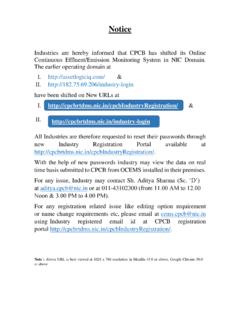
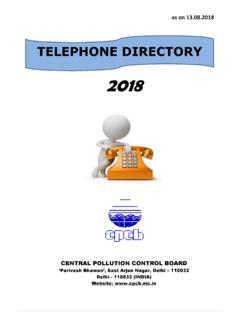
![1[SCHEDULE VI] - Welcome to Central Pollution …](/cache/preview/d/6/4/6/4/2/4/9/thumb-d6464249d79972a2e804a0aa4573c697.jpg)
